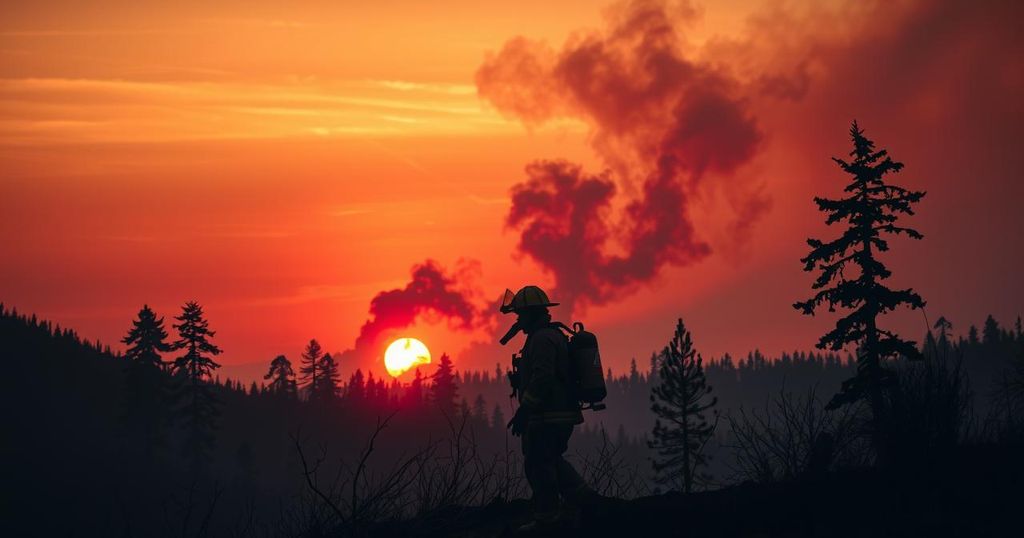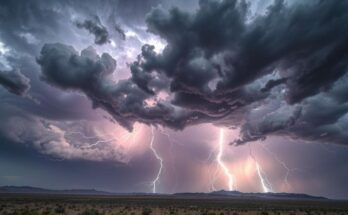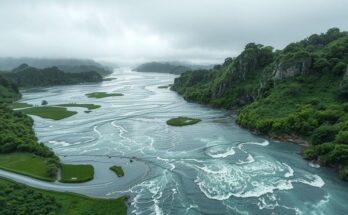More than 2,000 firefighters are engaged in combating Japan’s largest forest fire in 30 years in Iwate Prefecture, where 4,600 residents face evacuation. The fire has already consumed over 2,100 hectares, with one confirmed death and extensive property damage. Prime Minister Ishiba emphasized the commitment to protect homes while the situation is exacerbated by climate change-related drought conditions.
Japan is currently facing its largest forest fire in three decades, with over 2,000 firefighters deployed to combat the blaze. Officials reported that approximately 4,600 residents are under an evacuation advisory, following tragic losses, including one fatality from the fire in Iwate Prefecture. The extreme weather conditions, attributed to record low rainfall and the warmest summer on record last year, have significantly contributed to the fire’s intensity.
Prime Minister Shigeru Ishiba stated in parliament, “Although it is inevitable that the fire will spread to some extent, we will take all possible measures to ensure there will be no impact on people’s homes.” The wildfires, now extending over 2,100 hectares (5,200 acres) near Ofunato, are being managed by firefighters from 14 regions, including Tokyo, supported by military helicopters.
The Fire and Disaster Management Agency noted that 84 buildings had been damaged due to the flames by Sunday, with ongoing assessments of the destruction. Evacuations have affected approximately 2,000 individuals who sought shelter with friends or relatives, while over 1,200 have relocated to official shelters. Recent footage from national broadcaster NHK showcased alarming scenes of orange flames encroaching on properties, increase concern for residents.
While government data indicates a decrease in the overall number of wildfires since the 1970s, there were about 1,300 reported in Japan in 2023, predominantly occurring in the February to April timeframe when conditions are driest. In February, Ofunato recorded only 2.5 millimeters (0.1 inches) of rainfall, breaking past records and significantly lower than the normal average of 41 millimeters. Extreme weather events, including droughts and forest fires, have been closely linked to the effects of climate change, though they often arise from a complex interplay of various climatic factors.
In summary, Japan is grappling with its most severe forest fire in thirty years, necessitating the mobilization of extensive firefighting resources. The blaze, exacerbated by climatic factors, has resulted in casualties and significant property damage. Ongoing efforts to control the fire are crucial as the government continues to address the safety of affected residents amid this environmental crisis.
Original Source: www.kulr8.com




